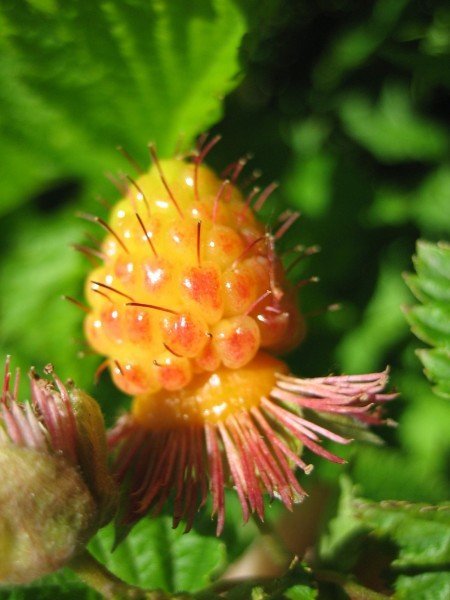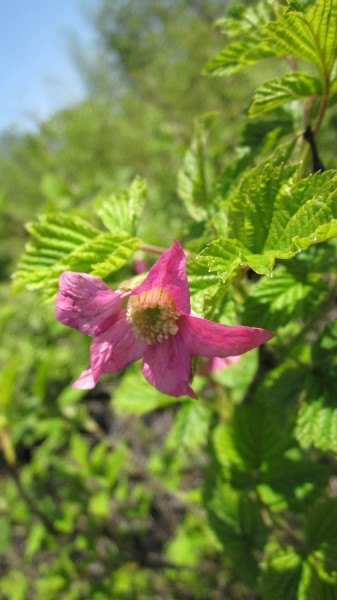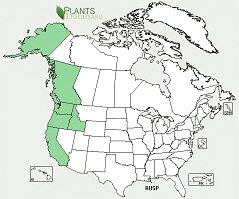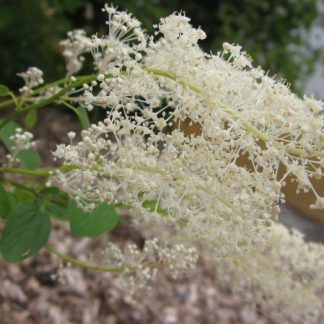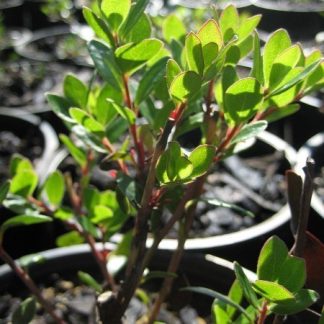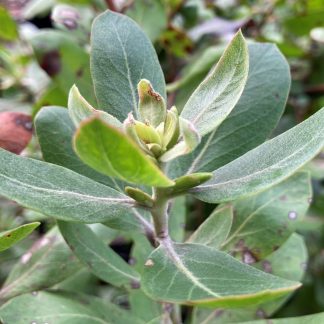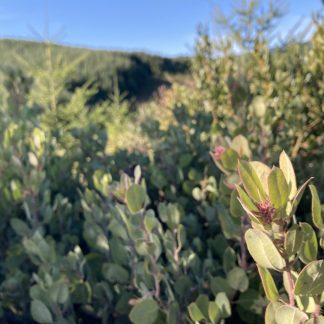Rubus spectabilis
salmonberry
Habit: the upright or slightly arching stems can form dense thickets up to 10 ft (3 m) high or grow individually. Stems vary with some sparsely prickled, while the upper portions of new growth are densely prickled. The peeling bark is light brown and tends to have a distinctive golden-brown to rust-red color in winter. Leaves are pinnately compound, comprised of three sharply pointed leaflets, with deeply toothed margins, and some appearing crinkled with two lobes. From early spring to early summer dark pink to red rose like flowers bloom in clusters of 2-3. The round fruit is an aggregation of drupes, resembling a large yellow to orange red raspberry.
Ecology: found growing in moist forest, slopes, valleys, riparian zones in the Pacific Northwest including Alaska, east into Idaho, and south into Mid-Coastal California at elevations up to 4600 ft (1400 m).
Growing Conditions: full sun to partial or full shade, and moist to wet soil.
Good source of nectar for hummingbirds and fruit for birds. The dense thickets provide excellent escape habitats for birds and small mammals. Rubus spectabilis can be aggressive if given ideal growing conditions, to control it with ease, plant in a drier location. Good for soil stabilization.
Specs
Deciduous Shrub
1.5-10 ft (0.5-3 m)
1.5-10 ft (0.5-3 m)
5-8

